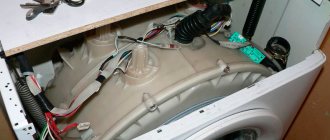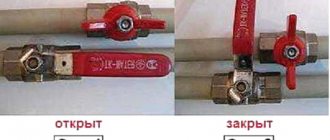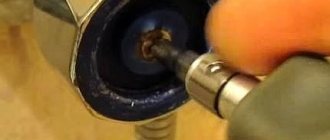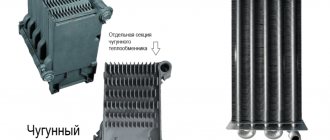Quite often, after flushing, a terribly unpleasant noise begins to be heard in the toilet, as if a waterfall or something like that had formed there.
The culprit is a faulty drain tank. Fortunately, this problem is minor and can be easily fixed. But before we talk about fixing this problem, let’s turn to the “filling” of the drain tank.
So that you understand what you are dealing with and can easily solve other problems, such as constantly running water into the toilet or stopping the tank from filling.
So, the cistern consists of three components, let’s say, namely:
Drain mechanism or shut-off valve
Such a device is necessary to supply liquid from the flush container to the toilet.
It consists of main parts:
Read also: How to start thinking? The answers are here!
- Release device (button or lever);
- drain siphon.
Most often, a rubber bulb acts as a siphon, which looks like an inverted plunger. This pear-shaped cone-shaped valve reliably shuts off the water in the lower part of the container.
The principle of operation of the drain mechanism is quite simple. When a button or lever is pressed, the lever system comes into action, the bulb rises through the rod and the water is drained into the toilet. At the same time, the shut-off valve opens and water begins to fill.
Leak prevention
It is easier to prevent a problem than to correct the consequences later. To prevent the tank from leaking, you should follow a few simple recommendations.
- Avoid shock loading , especially if the body of the product is made of ceramics.
- Avoid heating . This concerns the accidental supply of hot water or an attempt to rinse the tank, work performed with an increase in temperature. During repairs, when it is necessary to use welding equipment, plastic and ceramic containers must be closed.
- Once a year or more often you need to clean the container , as well as inspect all drainage units and, if necessary, disassemble the mechanism and clean each part.
- When purchasing plumbing fixtures, you need to carefully inspect not only the toilet body, but also the drain fittings. It’s a good idea to at least check the movement of the lever and the operation of the button.
If, after disassembling the mechanism, cleaning and replacing the o-rings, the problem is not resolved, you need to contact a specialist. Perhaps the cause of the leak is different and more qualified repairs are required.
Sewage gurgles in a private house and in the kitchen sink
A properly functioning sewer system in an apartment or house does not remind you of itself in any way; the water goes quickly and quietly into the drain, from where it is pumped into the collector. And this should be the case all the time, which is why a complex system of pipelines, sewer risers and other structures is designed. But the complex often malfunctions and gurgling begins in the sink, bathtub, toilet, and sometimes sounds are heard in the pipes, interfering with the usual established comfort. Why this happens and how to eliminate troubles - we’ll talk about this in more detail.
Why the faucet hums when you turn on the water: reasons, what to do to stop the whistling
All residents of high-rise buildings know this terrible roar. It is often accompanied by a frightening vibration of pipes. When we hear it, an unpleasant feeling of confusion and helplessness arises. It seems that the house has suffered a serious accident. In general, it’s not very pleasant. Why is the faucet humming? Can this be fixed on our own or is it time to start saving money and prepare for serious inconveniences?
Diagnosis of the problem
The reason for the hum in the pipes is turbulence of the flow, which appeared due to a leak in the connections of the plumbing elements. Leaks that occur in shut-off valves change the cross-sectional area of free passage inside the pipe space. This is how vortices appear that hum.
Air leaks due to leaks cause a series of hydraulic shocks, which cause vibration of the pipes. It often accompanies annoying sounds similar to a honking train.
Ways to solve the problem
Guaranteeing the good condition of the water supply system is a competent hydraulic calculation. Only on its basis can you correctly determine the diameter and material of pipes for communications.
The most radical solution to the problem that causes the system to hum loudly is to replace all old pipes and devices, including taps, with new ones in your apartment. But it is not a fact that it will bring results if the pipeline in the entrance or house is also faulty. It is necessary to determine where exactly the reason why the pipes are humming is located. Often these are valves and mixers.
DIY valve repair or replacement
Valve valve design features often become a source of problems. The use of ball valves instead of valve-type shut-off valves eliminates the need for frequent maintenance and replacement of gaskets. In new buildings, ball valves are immediately installed, and there the buzzing is much less frequent.
They are simpler and more efficient, although if they fail, they are practically beyond repair. This is not significant, because the cost of ball valves for apartment water supply is small. But if you still have a valve at home at the water inlet to the system, then repairing it yourself is cheaper than replacing it.
To do this, you need to block the access of water to the riser (if the house is multi-apartment). Try to unscrew the valve axle (sometimes called axle box). If the thread is stuck, it will not be easy to unscrew it. In this case, the valve body is heated with a gas burner, the axlebox is unscrewed and repaired.
Inside the apartment, locking devices operate on a similar principle, with only a slight difference. There are faucets in the bathroom and kitchen that we interact with every day. They fail more often than shut-off devices on the external pipeline. By design, they come with a rubber or ceramic seal.
To repair the mixer, you need to find out which part, when turned on, is the reason for the loud hum in the apartment. There are two options - this part is located either on a cold pipeline or on a hot one. Further:
- Shut off the water supply to the mixer.
- Unscrew the failed valve axle.
- Inspect the condition of the rubber and the seat in the mixer body.
- Replace the gasket on the valve.
- Screw the valve axle back into the housing.
- Check the tightness with a test water supply.
Some plumbers simply cut a bevel on the gasket at an angle of 45°, approximately 1 mm. Sometimes these simple actions are enough: the pipe no longer hums.
If the faucet axle boxes of your mixer have a ceramic seal, then the cause of the noise may be a sagging silicone washer that compresses the ceramic structural elements together. In this case:
- Shut off the water supply.
- Unscrew the valve axle.
- Inspect the condition of the silicone seal.
- If the washer subsides, cover its surface with plastic.
- Screw the valve axle into the housing.
- Check the tightness by running a test run of water.
Repairing ceramic crane axle boxes is an ineffective measure. If a part fails, it is better to replace it immediately.
Release mechanism with float
Valves of this type are divided by type and method of action:
The exhaust valve is single-mode . Such a device is equipped with one key, when pressed, all the liquid is drained from the tank.
Valve with "off" mode. In this mechanism, the initial impact leads to a small flow of liquid into the toilet, and the second one ends the water supply.
The exhaust valve is dual-mode. This device has two buttons on the lid of the tank, and when you press the first button, a certain portion of water comes out, and after pressing the second button, the container is completely emptied.
Regardless of the method of influence and type of device, the operating principle of the components of the release mechanism is the same. It should be taken into account that the shut-off valve is connected to the float via a copper rod or plastic rocker arm.
As soon as the water is drained after use, the float lowers, and at the same time the draft moves the shut-off valve. Through the resulting hole, water quickly begins to flow into the tank. When the float rises completely, the valve, under the influence of traction, closes the hole, as a result of which the water supply to the drain tank stops.
Most common reason
The most common reason why water is constantly flowing in the toilet is that the tank is overflowing. And excess liquid flows away through the overflow. And this may happen due to some of the following circumstances.
An overfilled toilet tank can cause a leak.
- It is possible that the valve gasket has become deformed in the tank design. This happens in cases where, as a result of the passage of time, the rubber has lost its elasticity and cannot tightly block the water.
- Another variant of the problem may indicate insufficient pressure of the gasket to the valve hole (outlet). The gasket may be of good quality, but it does not fit tightly, resulting in water leakage.
- The third possible problem relates to the condition of the pin that holds the float lever in the valve. It may be rusty or worn out.
- Finally, a crack in the valve body can also affect overflow. A crack in the valve is only possible in the plastic version. If your valve is made of brass, then this breakdown will not affect you.
This concerns possible reasons. But how to identify them? First, do a simple experiment.
- To do this, you need to remove the tank cap. Next, slightly (about 1 cm) raise the float. And if as a result of these actions the water stops flowing, then you have found the reason.
- Now, to bring the condition of the float and lever back to normal, you just need to slightly bend the float lever. This way it will shut off the water earlier and the problem will be solved. The water no longer flows.
We are looking for the following reason: if after the above steps the leak does not stop, then it is necessary to inspect the valve.
First, pay attention to the pin that holds the float lever.
Scheme for eliminating a leak in a toilet
It must be in place and undamaged. The hole in which it is located should not be spacious or loose.
Further actions depend on what you found during the inspection. If the stud is destroyed, it can be replaced with wire (copper). If the hole does not correspond to the standard, then you cannot do without purchasing a new valve.
And one more important tip: if you go for a new valve, then take the old one with you (for a sample), since modern construction markets have a large selection of plumbing accessories (it’s very easy to get confused and choose the right one).
How to fix a toilet cistern leak
Once the reason why the toilet is leaking has been found, repair and restoration work can begin. It should be noted that fixing the problem is slightly different in individual cases; the procedure largely depends on the shape of the model.
All of the action algorithms listed below are given for the case if a classically shaped tank is leaking.
Occurs due to overflow
What to do if water flows in the toilet due to overflow? First of all, you need to check which element malfunction caused the system to malfunction. You can determine this yourself by performing a simple test:
The above steps in 80% of cases will help determine the cause of the malfunction and eliminate it. However, if they did not help, then you will need to look for damage in other system components.
Leaks at the junction of the tank and toilet
The reason that water is leaking from under the toilet may be damage to the bolts that secure the tank to the toilet. A similar malfunction can occur with fasteners made of any material: both plastic and metal. What to do if the toilet tank is leaking due to bolted connections?
It is necessary to carry out a careful visual inspection of all components, which will require a complete disassembly of the drain tank (since in some cases the breakdown is not visible until the tank is assembled).
There is a possibility that only one part is damaged, so only that one will need to be replaced. However, in most cases, several elements will need to be replaced; it is advisable to purchase a full set of plumbing spare parts.
Assembly is carried out in reverse order. Rubber gaskets are changed, new fasteners are installed. It is important to avoid distortions during the fastening of bolts. You also need to remember that when tightening it is necessary to apply little force, because... too much pressure can damage the earthenware.
Leak due to defective hoses
The pipe that connects the water supply and the tank is quite durable. The weak point is the area where the flexible hose connects to the float system. A clear sign of a breakdown is that the plumbing is leaking at the place where the hose is attached.
Quite often, the cause of such a malfunction is a weak connection of fasteners. This is not difficult to fix: you just need to securely fasten the nuts and tighten the fasteners. In some cases, it is also necessary to replace the gasket if it has lost its elasticity and ceased to perform its functions.
However, it should be noted that if there are components made of plastic, tightening the fasteners must be done with the utmost care. Inaccurate movement or too much force will cause damage. Also in this case it is better not to use metal tools, because... this may contribute to thread failure.
If the toilet bowl leaks, it will need to be replaced. A corrugated pipe is inexpensive, so if a resident of the house discovers that it is leaking, it needs to be replaced as quickly as possible.
If the diaphragm is humming
But sometimes it happens that the pipes are new and the valves are in order and all the structures are securely fastened, but the noise literally drives you crazy. What could be humming in the pipes besides the above?
But the most ordinary diaphragm can hum. A diaphragm is a metal washer with a hole of the calculated diameter. Diaphragms are installed to reduce (cut) excess pressure. They can be installed both on apartment branches and on the distribution of water pipes in the basement. Diaphragms are often installed in heating points to reduce pressure.
If the diaphragm installed on the pipeline outlet to the apartment is humming, you can replace it with a pressure regulator.
Today you can find various pressure regulators on sale. Allowing you to eliminate unpleasant pressure drops in pipes.
If the diaphragm is installed in the basement, you should contact a plumber to eliminate the humming noise. A diaphragm made of a sheet of iron of sufficient thickness and securely fastened to the flanges will not buzz. As a rule, diaphragms made from the first piece of galvanized steel that comes to hand hum.
The most unpleasant thing about humming pipes is that determining the cause is not always easy. Vibration spreads throughout the building's plumbing system, partially transmitted through floor slabs and main walls. There is a feeling that everything around is buzzing. It is very difficult to find the area that produces this hum.
Therefore, you should very carefully check all possible options step by step by elimination, turning on and off different parts of the water supply system, in order to find where the characteristic sound that irritates others occurs.
Quite often, after flushing, a terribly unpleasant noise begins to be heard in the toilet, as if a waterfall or something like that had formed there.
The culprit is a faulty drain tank. Fortunately, this problem is minor and can be easily fixed. But before we talk about fixing this problem, let’s turn to the “filling” of the drain tank.
So that you understand what you are dealing with and can easily solve other problems, such as constantly running water into the toilet or stopping the tank from filling.
So, the cistern consists of three components, let’s say, namely:
Vibration of water tap gasket
An unpleasant sound may occur when opening the tap if the gasket is not tightly installed, blocking the flow of water. At the same time, water, moving at high speed, flows around a poorly fixed gasket, contributing to the appearance of a characteristic buzzing sound, sometimes passing through a knock, reminiscent of the operation of a hammer drill.
In this case, the noise is eliminated by replacing the gasket or valve housing with a new one.
To replace the gasket, turn off the water at the entrance to the apartment, carefully unscrew the faucet axle, and look at the condition of the gasket. If it is worn out and requires replacement, carefully replace it with a new one.
You can carry out such repairs yourself, without resorting to the services of a plumber.
You can watch a video on how to replace the rubber gasket on the crane box below:
When it leaks from under the nut
Very often, leakage occurs due to a loose nut. Therefore, first you should try to tighten the nut more tightly. If this doesn't fix the problem, it's most likely a gasket issue.
If water continues to leak, you should first dismantle and disassemble the product. Most often, the problem is a rupture in the seal. The key needs to be replaced.
To work you will need an adjustable wrench.
- Unscrew the nut.
- Remove the old key from the gander.
- Replace the old gasket with a new product.
- Wrap two layers of tape around the thread.
- Insert the gooseneck into place and tighten the nut.
Other faucet malfunctions
The quality of modern faucets depends on the manufacturer and the materials from which they are made. As a rule, there are cheap models with a short service life. They say about these “put it in and throw it away”; an unsuccessful purchase begins to hum and leak after three months. But even high-quality and expensive faucets develop malfunctions over time.
Leaking from under the nut
Often, when installing a faucet axle box, in case of insufficient or excessive tightening of the threaded connection, the tightness of the rubber seal is broken and a leak occurs. To fix this problem, you can dismantle the part and replace the rubber band.
You can also wrap several layers of special elastic tape around the thread before screwing it into the body. It is inexpensive and sold at any plumbing store. However, this problem is not the reason that the system is humming.
The lever is leaking
The single-lever faucet design has gained popularity. It is easy to use and looks beautiful in the interior. The device of this type is not much more complicated than a traditional mixer. With it, the pipe practically does not hum, and it is easier to find out the cause of the malfunction. The main working element in such a mixer is the cartridge. If you see a water leak under the lever, then that is where the problem lies.
Use a screwdriver to remove the lever; to do this, unscrew the fixing screw that secures the cartridge and lever together. The clamping nut is unscrewed, the cartridge is replaced and reassembled in the reverse order. The mixer is ready for use again. Cartridges of any type are sold in plumbing stores.
Shower switch leaking
A bathroom faucet differs from a kitchen faucet in that it provides the ability to switch the direction of water flow. With the help of a switch we use the shower or wash our hands in the sink. But it is this switch that is sometimes the cause of the malfunction. Depending on the type, switches are:
- Spool valves.
- Push-button.
- Cork type.
All types usually have one common cause of failure - seals. What to do? The solution to this problem is to replace the worn sealing product. As before, you need to turn off the water supply, remove the switch and change the gasket. Nothing complicated.
Mixer valve leaking
There is a leak through the faucet housing of the mixer. This means that it has already served its purpose and requires replacement. It makes no sense to try to eliminate such a malfunction by violating the integrity of the part. Just buy a new crane axle box and replace the faulty one.
Shower hose leaking
The shower hose is located in the shell of the metal hose. The most common cause of hose leakage is a leaky diffuser. In this case, you need to tighten the connecting nut more tightly. If water flows from a metal hose, most likely the hose has burst due to poor-quality material and low elasticity of the tube inside the hose.
You can fix this yourself by using a fitting, onto which the ends of the tube are stretched at the rupture site. Then they must be pressed to the fitting with clamps. The video shows how this is done.
This review provided a brief analysis of problematic situations with plumbing in your home. I hope it was helpful. As you can see, there is nothing super complicated in the world of faucets and toilets. Knowing the design features, it is easy to cope with minor repairs on your own. Just change the gasket and the pipe will stop humming. The main thing is not to be scared or afraid. Believe in your strength!
Remedies
Tidying up the taps
Instructions for eliminating excessive volume in the toilet recommend starting with the taps:
These are the taps that need to be repaired first.
Deposits can accumulate inside the hose
Advice! It is better to wash the hose regularly - then the accumulation of lime will not affect the pressure of water entering the tank.
Tank repair
If the taps and hoses are in order, and the volume does not decrease, you need to fix the tank yourself.
When the rubber seal wears out, a characteristic humming sound of water flow may be observed.
The fittings need to be sorted out and cleaned of lime and plaque
After this, we collect all the parts, install the tank in place and supply water. As a rule, such prevention helps, if not eliminate the noise completely, then seriously reduce its intensity.
Useful tips
However, even if your toilet is working properly, it may continue to make noise.
And here these recommendations will help:
Note! But the wall decoration is responsible for the noise level of your neighbors, so it’s worth paying attention to this nuance.
Systems with built-in tanks are much less noisy
Noise in pipes when the tap is open
When water begins to flow from the water supply, in addition to the appearance of a loud hum, vibration usually occurs in the system. Sometimes the reason why the pipes hum when you open the tap is the faucet on the mixer. When an abundant water flow appears, it begins to vibrate.
In this case, the water pressure increases, the valve block blocks the pressure, and then turbulence is formed. Therefore, if the pipes hum when the tap is opened, the main thing that needs to be done is to check the functionality of the tap - the axle box. It will not be difficult to find out which faucet is causing the problem. You should open them one by one, first, for example, with cold water, and then with hot water.
According to experts, crane axle boxes with rubber gaskets often cause a lot of trouble, not counting unpleasant sounds, so it is advisable to abandon them. Craftsmen recommend installing ceramic faucet axle boxes from foreign manufacturers - they are characterized by compatibility with domestic mixers.
Such products operate silently, do not leak over time, and do not require gasket replacement. But, if unpleasant sounds occur when using a ceramic axle-box tap, then the product was installed incorrectly.
In the case when new plumbing has been installed in the apartment, but the pipes in the bathroom and toilet still vibrate and hum when you open the taps, you need to check how correctly the fastening of the pipes and faucets is done. Usually, extraneous sounds disappear after sealing the joints of system elements.
If there are noises in the plumbing structure that suddenly appear and soon disappear, their possible cause is the presence of faults in the neighbors’ apartments.
Another explanation for the appearance of a hum in the pipes when the tap is open may be the excess pressure present in the pressure system. This problem most often occurs at certain times of the day when the pressure in the water supply reaches its highest value.
Too much load on the system is undesirable, not only because the pipes in the riser are humming. A sudden impact on the pipeline can disrupt the operation of the entire water supply structure and cause depressurization of the junctions of its sections.
You can try to reduce too high pressure by placing an air chamber in the free space between the pipes and the tap. To create such a chamber, either an additional piece of pipe or a muffler specifically designed for pipes is used.
Other interesting questions and answers
What's the best way to prepare for anal sex?
Conchita Gagarina1
If this is the first time (and maybe it will suit someone for subsequent times), then I would advise cleaning the intestines in an hour or two. But not with a liter enema, but do this:
1. Give an enema no more than 200 ml. 2. Be patient for 5-10 minutes 3. Empty your bowels Repeat one more time and give an enema with a chamomile solution, 100 ml somewhere. Just be sure to lubricate the tip with Vaseline or lubricant, otherwise your butt may hurt later and there will be no time for sex. And the main thing is not to overdo it, if you feel that even 100 ml is too much for you, then stop. This may seem disgusting to some, but it will help avoid any unpleasant moments.
There is nothing disgusting about this, and those who say that there is no need to do an enema anymore are, apparently, terribly lucky. I was unlucky once and I don’t even want to remember. Plus, the important thing before anal sex is not to be nervous and relax as much as possible.
John Done17
Why does the drainage tank make noise when filling with water?
What is the cause of noise in the toilet when water is filled?
What is the reason for the squeaking or whistling sound in the tank when draining?
Why does water hum when it fills the toilet tank?
himerka2
I want to add one more method to what was written in the first answers. Which can and should be used in combination with “attaching” a rubber tube.
You need to install a water pressure regulator (reducer). Either for the whole apartment or for the toilet.
If you in your family do not need to quickly fill the tank, then this regulator should be set to the lowest pressure, for example, 0.5.....1 atm.
hallux5
Why does water expand when heated and expand when frozen?
When heated strongly it expands, it is more or less clear why this happens. But why does it also expand when it turns into a solid state (ice)? Guest6
An interesting feature of water is that when heated from 0 to 4 (3.98 - exactly) °C, water contracts. Thanks to this, fish can live: when the temperature drops below 4 °C, colder water, being less dense, remains on the surface and freezes, and a positive temperature remains under the ice. Water has other features: high temperature and specific heat of fusion and boiling (compared to hydrogen compounds with similar molecular weight); high heat capacity and low viscosity of liquid water; Water, unlike other substances, expands when it freezes. Water is practically incompressible. All these features are due to hydrogen bonds. Since in a water molecule 2 hydrogen atoms give one electron to an oxygen atom, the oxygen atom receives a negative charge, and the hydrogen atoms receive a positive charge. Due to this, each oxygen atom is attracted to the hydrogen atoms of other molecules and vice versa. Each water molecule can participate in a maximum of four hydrogen bonds: 2 hydrogen atoms each in one, and an oxygen atom in two. When ice melts, some of the bonds break, which allows water molecules to be packed more tightly; when water is heated, bonds continue to break and its density increases, but at temperatures above 4 °C this effect is weaker than normal thermal expansion; During evaporation, all remaining bonds are broken.
Guest1
Tags
set of water set of water set of water and what water comes in models of toilets in models of toilets choose a toilet Repair of toilets toilet cistern Installation of toilets in the toilet for toilets models of toilets in models of toilets The toilet is humming why the toilet is humming The toilet is humming when Why is the toilet humming Why is it humming and The toilet is humming pipes you need to choose cases you need just need to pick up water, need to wash off, need to replace. The toilet cistern is noisy. The toilet cistern is noisy. The toilet cistern is noisy. The toilet cistern is noisy.
diaphragm










